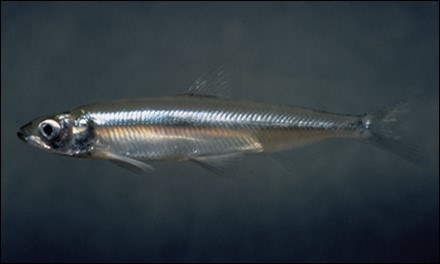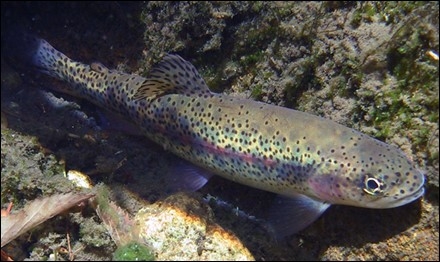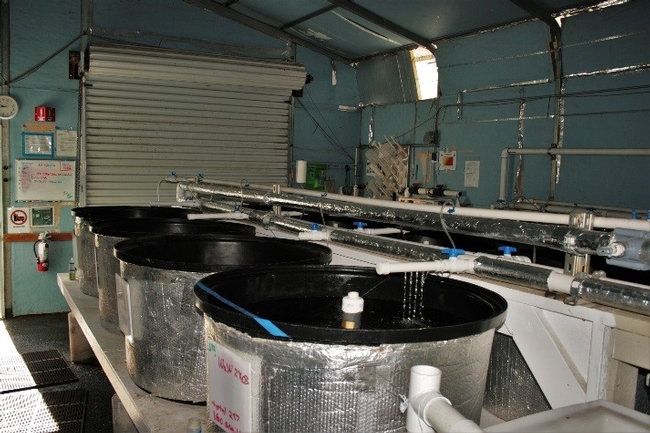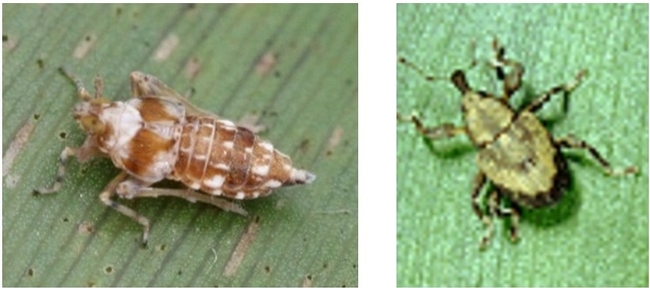Biological control of water hyacinth in the Delta is being developed as part of an integrated, adaptive management plan for sustainable, long-term control of water hyacinth. Water hyacinth is one of the most troublesome floating aquatic weeds in the Delta, and one of the key targeted species in the USDA-ARS-funded Delta Region Areawide Aquatic Weed Project (DRAAWP). Biological control can greatly assist the weed control program managed by the Division of Boating and Waterways-California Department of Parks and Recreation (DBW). Before biocontrol can be fully implemented, the control plan must be reviewed by the U.S. Fish and Wildlife Service (USFWS) and the NOAA-National Marine Fisheries Service. USFWS is responsible for protecting Delta smelt, among a number of other Federally Endangered-listed species in the Delta.

Delta smelt (Hypomesus transpacificus) is a small fish that feeds on zooplankton and migrates annually from the freshwater Delta into the brackish waters of Suisun Bay and the surrounding marshes. This fish is only found in the Delta-Bay region, where its wild populations are very low, and it is thus in danger of extinction. There are several much larger fish also of concern for the regulatory agencies, including the Endangered Sacramento River winter-run Chinook salmon and Threatened (somewhat more abundant) Central Valley spring-run Chinook salmon (Oncorhynchus tshawytsha), and Threatened steelhead trout (Oncorhynchus mykiss). The regulatory services require that biological control, like any other aquatic weed control method, must be shown to not cause harm to these fish species.
One possible interaction between the plant-feeding biological control agents of water hyacinth and the fish is predation: the fish may eat these insects, most likely live or dead adults when they fall off of the plants. The fish may thus actually benefit from the presence of the insect biocontrol agents, assuming that they are non-toxic to the fish. A multi-agency group is now conducting the first ever-tests of feeding by hatchery-raised Delta smelt and steelhead trout on two water hyacinth biological weed control insects. To our knowledge, these tests are the first to examine feeding by special status fish species on any weed biocontrol agent. The individuals involved are Dr. Patrick Moran, Dr. Paul Pratt and Dr. Julie Hopper of the USDA-ARS Exotic and Invasive Weeds Research Unit, Jeffrey Caudill of the Division of Boating and Waterways-California Department of Parks and Recreation (DBW), and Dr. Swee Teh of the School of Veterinary Medicine, UC-Davis. The biocontrol agents being tested are the water hyacinth weevil (Neochetina eichhorniae) and the water hyacinth planthopper (Megamelus scutellaris). This weevil is currently rare in the Delta (compared to the more abundant weevil, N. bruchi), but plans are in place to increase its numbers and impact. The planthopper has been released at isolated sites upstream in the Sacramento and San Joaquin River watersheds, but will be new to the legal Delta if released.
The tests of rainbow trout feeding are being performed at the Aquatic Testing Laboratory in the Center for Aquatic Biology and Aquaculture (CABA) on the UC-Davis campus, while tests on Delta smelt are being performed at the Fish Conservation and Culture Laboratory – UC Davis (FCCL) in Byron, CA. Hatchery-reared Delta smelt and rainbow trout are separately acclimated in tanks for about a week, and then separately fed either weevils or planthoppers for four days in comparison to other fish fed their normal tank diet. The fish are then collected, frozen, and dissected to determine if the biocontrol agents are in the gut. If feeding occurs, follow-up tests will determine if feeding on either of these biocontrol agents results in beneficial or detrimental effects.
In preliminary results, adult Delta smelt fed on planthoppers whereas the juvenile rainbow trout did not. Testing of weevils and planthoppers on adult fish of both species will take place in August 2017.
Dr. Patrick Moran is with the USDA-ARS Exotic and Invasive Weeds Research Unit. This research is a component of the Delta Regional Areawide Aquatic Weed Program (DRAAWP).

